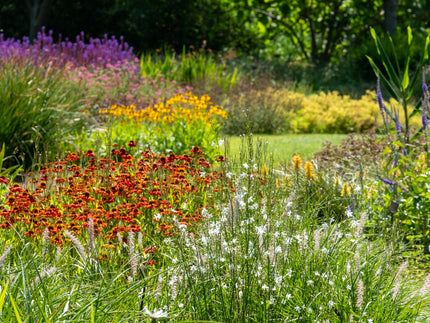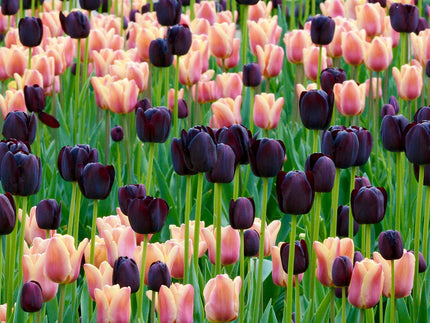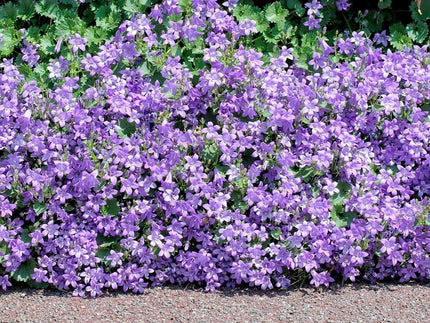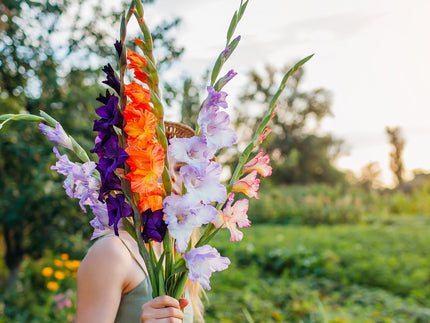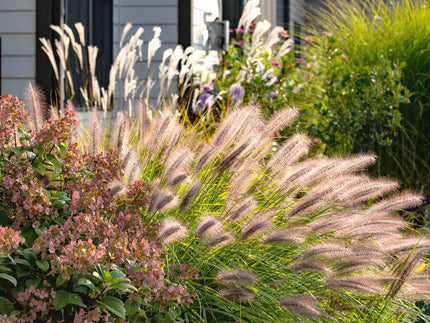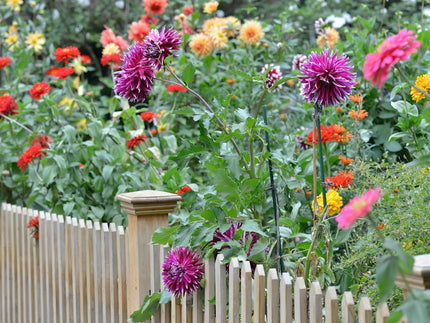Delosperma
Delosperma is a tough little perennial, flourishing in hot, dry areas where all else fails. Its glittering summer display of daisy-like blooms will turn a forgotten corner into a dazzling focal point. Vibrant, silky petals form shimmering landing pads for visiting pollinators and bring a bright splash of colour to the garden. Given its love of heat, the common name of Ice Plant may seem strange. The name comes from its glistening foliage which has specialized water-storage tissues that sparkle like ice in the sun.
With the benefit of extreme drought tolerance, this hardy succulent will save your time and water. It forms a dense mat of glossy green, fleshy leaves that remain evergreen throughout the year. With a low, spreading habit it makes useful ground cover for rockeries, troughs and containers.
Delosperma is virtually maintenance free in the right conditions. It will flourish in a sunny, sheltered spot with well drained, stoney or sandy soil. In gardens with heavy winter rainfall, it will be happiest in a container which can be moved to the greenhouse for the winter months.
How to plant
— Delosperma should be planted in the same season as supplied, whether that's autumn or spring. They will need water and light so plant as soon as possible after delivery (ideally within a week). Delosperma is supplied as a 9cm root ball plant, like a potted plant with soil held together by the roots.
— Root ball plants can in some cases be planted directly into a clear space in borders. This depends on soil type, moisture levels and what else is growing in the space. Root ball plants can settle in well to good quality, crumbly soil, but as Delosperma prefers a light, free-draining and quite dry soil, a rich and moist border soil may not be suitable for them in the long run. You should also avoid planting directly into challenging conditions (like light, stony, dry soil) or into a space which is close to more established plants which could over-crowd them during the growing season.
— Due to its preference for dry, poor soil, it is recommended to pot up Delosperma on arrival into 15-20cm pots with either cactus and succulent compost or a multi-purpose compost amended with horticultural grit/ perlite to improve drainage. Grow-on in a sheltered, sunny part of the garden until they are a little more established before transplanting into the ground. They can be transplanted into a well-suited growing space once they are larger and have a stronger root system. They will be ready to transfer into the garden when they look like they're starting to outgrow their temporary pots, the plant should come out of the pot with the compost held intact by the roots.
— Plant so that the root system/root ball is fully submerged in the soil, leaving the top growth exposed above the soil surface. If your plant doesn't have much top growth, it should have buds at the crown of the root system and they should be level with the soil surface after planting. If planting root ball plants directly into a border, choose a sunny or partially shaded position ideally with light soil and space the plants 20-30cm apart if planting as ground cover or in groups. Add a generous amount of multipurpose compost to each planting hole to help the new roots grow.
— Water-in after planting and continue to water regularly whenever the soil feels dry below around 3-5cm from the surface. If the soil is already damp during winter, it will not need additional watering. You should water regularly in the first growing season during spring and summer while the plant is settling in. Once established, they are very drought tolerant and rarely need watering at all. Allow the soil to dry out between each watering. Over-watering will cause the plant to rot. Water only when necessary and allow all excess water to drain away.
— When transplanting to borders, choose a position in full sun, on a gritty, well-drained soil. Delosperma favours dry, sun-baked positions and shows excellent drought tolerance, once established..
Aftercare:
— Delosperma is evergreen, retaining its foliage throughout the winter months.
—This resilient perennial is fully hardy when grown on drier soils in a sheltered spot. However, heavy winter rainfall may cause the roots to rot. In wetter locations a protective cloche will help to protect the plant in winter. Alternatively, it can be grown in a container and moved to a greenhouse or cold frame during the wet winter months.
— Deadhead when needed during the flowering season. You can also cut away excess foliage growth whenever necessary.





















































































